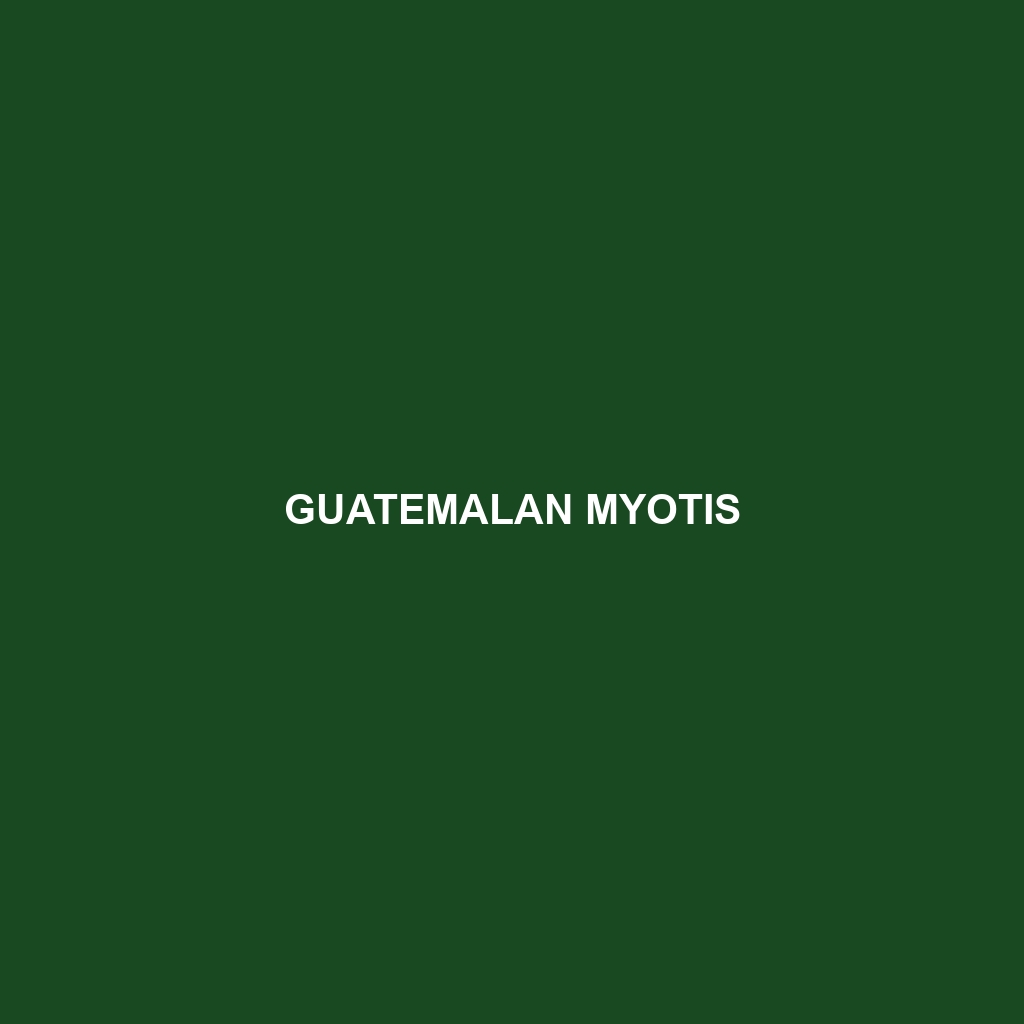Guatemalan Myotis
Common Name: Guatemalan Myotis
Scientific Name: Myotis guatemalensis
Habitat: The Guatemalan Myotis is primarily found in the lush, tropical forests of Central America, particularly within Guatemala, Honduras, and parts of southern Mexico. This bat species prefers habitats that offer a mix of open spaces and dense vegetation, often roosting in caves, hollow trees, and man-made structures near water sources.
Physical Characteristics: The Guatemalan Myotis typically measures about 8 to 10 centimeters in body length, with a wingspan of around 25 centimeters. Its fur is usually dark brown to gray, providing excellent camouflage among the forest foliage. The bat has long, pointed wings and a distinctive nose structure that aids in echolocation, making it adept at navigating its environment during nighttime flight.
Behavior: Guatemalan Myotis bats are nocturnal, emerging at dusk to forage for food. They are known for their agility in flight, utilizing echolocation to locate insects mid-air. During the day, they roost in social groups, which can range from a few individuals to large colonies. Their social structure and cooperative behaviors often intrigue researchers and enthusiasts alike.
Diet: The Guatemalan Myotis primarily feeds on terrestrial insects, including moths, beetles, and flies. It employs an active hunting strategy, often swooping down to catch its prey in flight. This bat’s diet is crucial for controlling insect populations in its habitat, highlighting its role in the ecosystem.
Reproduction: Breeding typically occurs during the warmer months, with females giving birth to a single pup after a gestation period of about two months. The pups are initially flightless and depend on their mothers for nourishment and protection. Parental care is evident in this species, as mothers often share roosting sites and care for young collectively.
Conservation Status: The Guatemalan Myotis is currently classified as “Data Deficient” by the International Union for Conservation of Nature (IUCN), meaning that there is insufficient information to assess its risk of extinction. However, habitat destruction and human encroachment pose potential threats to its populations, raising concerns about its long-term survival.
Interesting Facts: One fascinating aspect of the Guatemalan Myotis is its unique echolocation call, which varies in frequency and pattern depending on environmental conditions. Additionally, this species is often subjects of scientific studies due to its adaptability and resilience in changing habitats.
Role in Ecosystem: As important insectivores, Guatemalan Myotis bats play a significant role in maintaining ecological balance by controlling insect populations. Their presence contributes to the health of their local environments, benefiting agriculture and biodiversity by reducing pest populations that affect crops and other wildlife.
